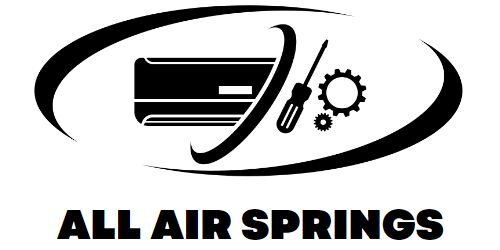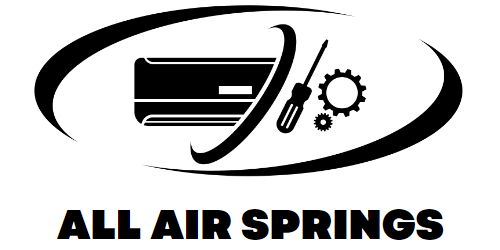Everything You Need to Know About Truck Headlights: Types, Maintenance, and Upgrades
Introduction to Truck Headlights
Truck headlights play a critical role in ensuring safe and efficient driving, particularly during nighttime or in low-visibility conditions. They not only illuminate the road ahead but also help other drivers see your truck from a distance. Whether you’re driving on highways or rural roads, having the right headlights can significantly improve safety and comfort.
The primary function of truck headlights is visibility. A well-lit road helps you navigate through obstacles, signs, and other vehicles safely. Additionally, headlights serve as a vital tool for alerting other drivers about your presence, reducing the risk of accidents.
There are several different types of truck headlights available, each offering unique benefits. From traditional halogen lights to more advanced LED and HID options, each technology provides varying levels of brightness, efficiency, and longevity. In this section, we will introduce the most common types of truck headlights and explore why choosing the right one matters for both safety and driving experience.
Whether you’re looking for cost-effective options or high-performance upgrades, understanding the types and functionalities of truck headlights is the first step toward enhancing your vehicle’s lighting system. Let’s dive deeper into the different types of headlights in the next section.
Types of Truck Headlights
When it comes to truck headlights, there are several types to choose from, each offering different advantages depending on your driving needs. The three most common types of truck headlights are halogen, LED, and HID (High-Intensity Discharge). Understanding the differences between these options can help you make the right choice for your truck.
Halogen Headlights
Halogen headlights are the most widely used and affordable option. They work by passing electricity through a filament, which heats up and emits light. Although they are cost-effective, they consume more energy and have a shorter lifespan compared to other types. Halogen headlights are a great choice for those on a budget but still looking for reliable performance.
LED Headlights
LED headlights have quickly become a popular choice for truck owners due to their energy efficiency and long lifespan. Unlike halogen lights, LEDs use semiconductors to produce light, resulting in less power consumption and a brighter, more focused beam. LED headlights also offer better durability, making them an excellent choice for those who drive in harsh conditions or require frequent use.
HID Headlights
HID headlights are known for their superior brightness and efficiency. They use a gas discharge to produce light, creating a much brighter beam than halogen headlights while consuming less power. HIDs provide better visibility at long distances, making them ideal for truck drivers who frequently drive at night or in low-light conditions. However, they tend to be more expensive and may require more maintenance.
Each type of truck headlight has its own strengths, so it’s essential to consider your specific needs before making a decision. In the next section, we will discuss how truck headlights contribute to road safety.
The Role of Truck Headlights in Road Safety
Truck headlights are crucial for ensuring safety on the road, both for the driver and others around them. Properly functioning headlights allow truck drivers to see clearly and avoid obstacles, while also making the truck visible to other drivers, particularly in low-visibility conditions.
Improving Visibility
The most obvious role of truck headlights is to improve visibility, especially at night or in adverse weather conditions such as rain, fog, or snow. A bright, well-aligned headlight allows the driver to spot road signs, debris, and other potential hazards from a safe distance, reducing the likelihood of accidents.
Reducing Blind Spots
Truck headlights not only help the driver but also aid other vehicles in avoiding potential blind spots. Properly adjusted headlights ensure that the truck’s presence is visible to other drivers, helping prevent collisions and accidents, particularly during nighttime driving.
Legal Requirements and Regulations
In many regions, there are strict regulations regarding the brightness, alignment, and condition of truck headlights. Adhering to these standards is not only a legal obligation but also a safety measure that ensures headlights are optimally positioned to minimize glare and provide maximum visibility. Failure to meet these standards could lead to fines and, more importantly, pose a serious safety risk.
In summary, the safety benefits of truck headlights cannot be overstated. Properly functioning, correctly adjusted headlights are vital for safe driving, helping prevent accidents and ensuring the safety of everyone on the road. Next, we will explore the differences in headlight brightness and beam patterns.
Understanding Headlight Brightness and Beam Patterns
The brightness and beam pattern of truck headlights are essential factors that significantly impact visibility and safety on the road. Understanding the differences in brightness and beam patterns can help you select the right headlights for your driving conditions and ensure optimal performance.
Brightness: Low Beams vs. High Beams
Truck headlights are typically designed with two brightness settings: low beams and high beams. Low beams are used for everyday driving, providing adequate light without blinding oncoming drivers. They are ideal for city driving or when you’re following another vehicle. High beams, on the other hand, offer a much brighter light and are best used when driving in dark, open areas with minimal traffic. High beams help illuminate a longer distance, providing better visibility in remote or poorly lit areas, but they should be switched off when approaching other vehicles to avoid causing discomfort or potential accidents.
Beam Patterns: How They Affect Visibility
Beam patterns refer to the direction and spread of light emitted by the headlights. There are three primary types of beam patterns:
-
Spot Beam
: Focuses light into a narrow, long-distance beam. Ideal for driving at higher speeds on open highways.
- Flood Beam: Provides a wider light spread for better visibility in close-range areas, perfect for off-road driving.
- Combo Beam: A mix of spot and flood beams, offering a balanced solution for various driving conditions.
Choosing the right beam pattern is crucial for ensuring safety and proper illumination of the road. A well-aligned beam will reduce glare for other drivers while providing the truck driver with clear visibility.
Understanding how brightness and beam patterns affect your driving experience is essential when selecting truck headlights. In the next section, we will discuss how to maintain and care for your headlights to ensure long-lasting performance.
Maintaining and Caring for Truck Headlights
Proper maintenance of truck headlights is crucial to ensuring that they continue to provide optimal performance and safety on the road. Over time, headlights can accumulate dirt, become misaligned, or experience wear and tear. Here are some essential tips for maintaining and caring for your truck headlights.
Regular Cleaning
Headlight lenses can become cloudy or dirty, which may reduce the effectiveness of the light output. Regularly cleaning the headlights using a soft cloth and a non-abrasive cleaner will help maintain their brightness. For stubborn dirt or grime, consider using a headlight restoration kit to remove oxidation or fogginess from the lenses.
Checking for Burnt-out Bulbs
One of the most common reasons headlights stop working is burnt-out bulbs. It’s important to regularly check your headlights to ensure both low and high beams are functioning properly. If you notice that one side is dimmer than the other, or if a bulb appears completely out, replace it promptly to maintain safety on the road.
Proper Headlight Alignment
Over time, your truck’s headlights can become misaligned due to regular use, road bumps, or accidents. Misaligned headlights can reduce visibility, create glare for other drivers, or even shine in the wrong direction. If your headlights are no longer aligned correctly, it’s important to have them adjusted by a professional.
Avoiding Water Damage
If water or moisture accumulates inside the headlight casing, it can lead to electrical issues and reduce the lifespan of the bulb. Make sure your headlights are properly sealed to prevent moisture buildup. If you notice condensation inside the housing, it’s best to inspect the seals and gaskets or seek professional help.
By following these maintenance tips, you can extend the lifespan of your truck’s headlights, ensuring they continue to perform at their best. In the next section, we will explore the benefits of upgrading your truck headlights for better performance.
Upgrading Truck Headlights for Better Performance
Upgrading your truck’s headlights can significantly improve both performance and safety, especially if you’re looking to enhance visibility or replace outdated technology. Whether you’re interested in brighter lights for night driving or more durable options for off-road use, upgrading to modern headlights can make a big difference.
Benefits of Upgrading to LED or HID
LED and HID (High-Intensity Discharge) headlights offer several advantages over traditional halogen bulbs. LEDs are known for their energy efficiency, long lifespan, and brighter, more focused light. They use less power and provide a crisp, white light that makes driving at night much safer. HID headlights, on the other hand, are often brighter than LEDs and halogens, making them ideal for long-distance visibility. HIDs also have a longer lifespan and better performance in low-light conditions.
Better Visibility and Safety
Upgrading your headlights can greatly enhance your visibility, especially in rural or poorly lit areas. Brighter, more focused headlights allow you to see obstacles, road signs, and other vehicles from a greater distance, which can reduce the risk of accidents. Additionally, better lighting helps other drivers spot your truck more easily, contributing to overall road safety.
Off-Road Performance
If you frequently drive off-road or in challenging conditions, upgrading to specialized headlights can improve your driving experience. Flood beam and combo beam patterns, often available in LED or HID options, provide a wider spread of light, making it easier to navigate rough terrain. These upgrades can give you more control and confidence in difficult driving conditions.
Cost-Benefit Analysis
While upgrading headlights can require an initial investment, the long-term benefits outweigh the costs. LED and HID headlights have longer lifespans, meaning fewer replacements and reduced maintenance. The improved safety and visibility can also lead to fewer accidents or costly repairs down the road.
Upgrading to high-performance truck headlights is an investment in your vehicle’s safety and functionality. In the next chapter, we will discuss common problems with truck headlights and how to address them.
Common Problems with Truck Headlights
Truck headlights are designed to last, but like any other vehicle component, they can encounter issues over time. Understanding common headlight problems and how to address them is essential to maintaining both safety and performance. Here are some of the most frequent issues that truck owners may face with their headlights:
Dimming or Flickering Headlights
One of the most common problems with headlights is dimming or flickering. This issue can be caused by various factors, including a weak battery, faulty alternator, or a loose electrical connection. If the headlights flicker or become noticeably dim, it’s important to have the electrical system checked by a professional. In some cases, replacing the bulb or cleaning the headlight socket can resolve the issue.
Cloudy or Foggy Lenses
Over time, the plastic lenses of truck headlights can become cloudy or foggy due to exposure to sunlight, moisture, and road debris. This reduces the brightness and effectiveness of the headlights, making it harder to see at night. Cleaning or restoring the lenses using a headlight restoration kit can help clear up the fogginess and improve light output. If the lenses are severely damaged, replacement may be necessary.
Burnt-out Bulbs
Headlight bulbs, like any other light bulb, eventually burn out after prolonged use. A simple sign of this problem is when one or both headlights stop working entirely. Replacing the burnt-out bulb is usually a quick and easy fix, but make sure to check the alignment and wiring connections to prevent future issues.
Misaligned Headlights
Misalignment of the headlights is a common issue that can occur after hitting bumps or during accidents. Misaligned headlights can cause glare for other drivers or reduce visibility for the truck driver. If your headlights seem to be shining too high, too low, or in the wrong direction, it’s important to get them realigned by a professional to ensure optimal performance.
Water Damage or Moisture in the Housing
Water or moisture inside the headlight housing can lead to electrical problems or bulb failure. If you notice condensation or fog inside your headlights, it could be due to a broken seal or cracked lens. Inspecting the headlight housing for any damage and sealing it properly can help prevent water from getting inside. If the moisture persists, it may be necessary to replace the headlight unit.
By addressing these common headlight problems promptly, you can ensure that your truck remains safe and roadworthy. In the final section, we will recap why investing in high-quality truck headlights is essential for long-term performance and safety.
Conclusion: Why Investing in Quality Truck Headlights is Essential
Investing in high-quality truck headlights is crucial for ensuring the safety, performance, and longevity of your vehicle. Whether you’re driving on highways at night, navigating through fog, or maneuvering off-road, the right headlights can significantly improve visibility and reduce the risk of accidents. Choosing the best lighting option—whether it’s halogen, LED, or HID—depends on your driving needs, budget, and the conditions in which you often drive.
Enhanced Safety
Truck headlights are not just about illumination—they are a safety feature that helps you and other drivers navigate safely. Properly functioning, well-maintained headlights reduce the likelihood of accidents by allowing you to see the road clearly and be seen by others. With upgraded lights like LEDs or HIDs, you can enjoy brighter, more focused beams that improve your ability to spot obstacles and road signs from a greater distance.
Improved Driving Comfort
The right headlights also contribute to a more comfortable driving experience. Driving with dim, misaligned, or outdated headlights can be frustrating and potentially dangerous. With high-quality headlights, you’ll enjoy better visibility, reduced eye strain, and a clearer view of the road, making long drives less stressful and more enjoyable.
Long-Term Cost Savings
While the initial cost of upgrading your headlights may seem high, the long-term benefits outweigh the investment. LED and HID headlights have longer lifespans, require fewer replacements, and offer better energy efficiency. This can save you money on frequent bulb replacements and repairs, making them a wise investment for the future.
In conclusion, selecting and maintaining the right truck headlights is an essential part of ensuring safety on the road. By upgrading to high-quality headlights, you’re not only enhancing your vehicle’s performance but also protecting yourself and others while driving. Take the time to invest in the best lighting system for your truck, and enjoy a safer, more efficient driving experience for years to come.
For detailed information, you can contact us at torqueusa.com


